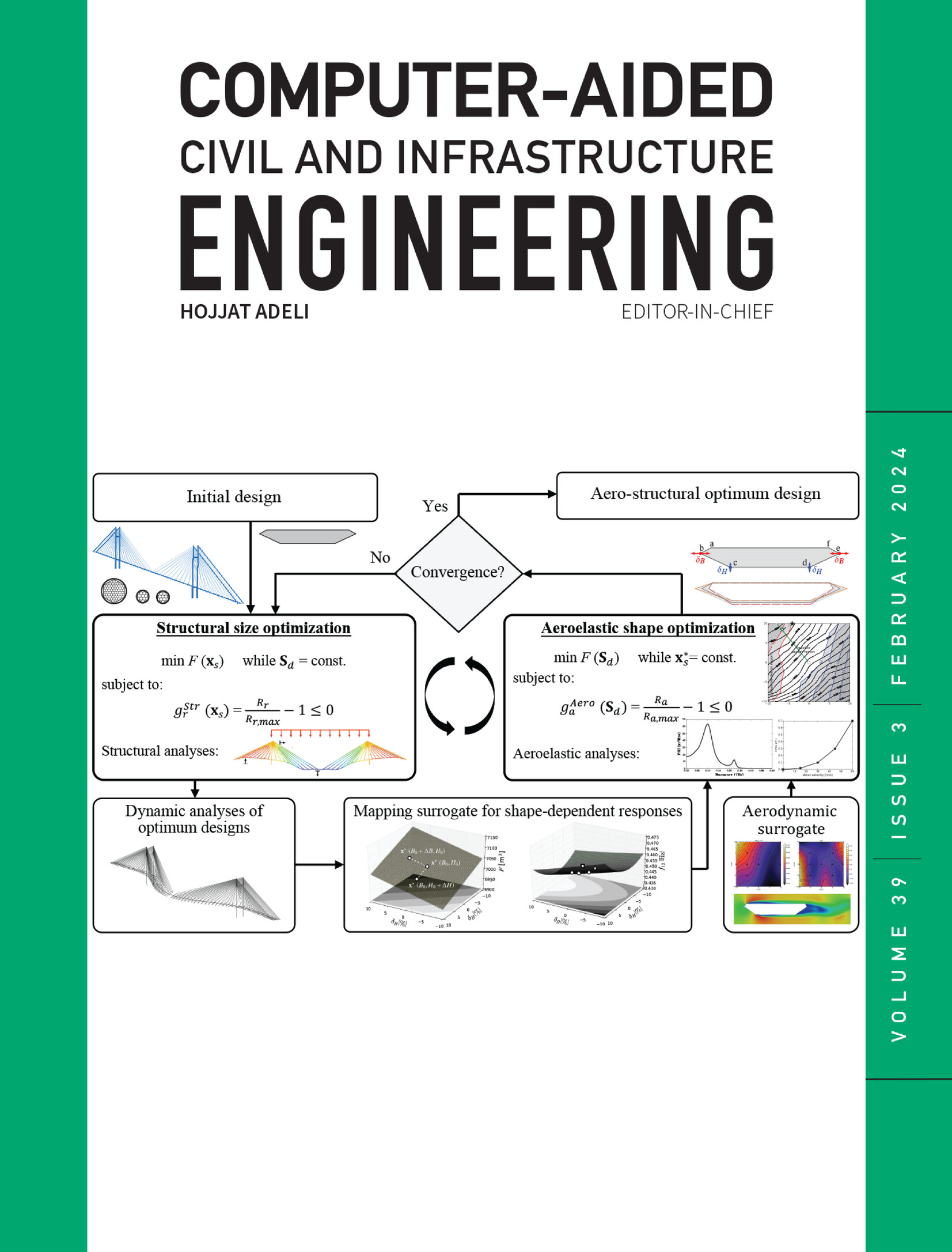Multi-task graph-based model for metro flow prediction under dynamic urban conditions
IF 8.5
1区 工程技术
Q1 COMPUTER SCIENCE, INTERDISCIPLINARY APPLICATIONS
引用次数: 0
Abstract
Accurately predicting metro commuter flows under changing urban conditions is essential for guiding infrastructure investments and service planning. However, existing methods show limited adaptability to evolving urban conditions. To address this, we propose an adaptive graph sharing embedding cascade interaction network (AGSECIN), which establishes a dynamic mapping relationship between changing urban conditions and commuter flows, enabling accurate predictions of metro inflows, outflows, and origin-destination (OD) flows simultaneously. A graph attention network is built on the long-term graph to capture the spatiotemporal evolving patterns of urban conditions. Then, an adaptive supply–demand sharing embedding network is designed to model the interaction between origin supply and destination demand. Finally, an adaptive feature interaction layer is developed to uncover the complex high-order relations among passenger flows and urban conditions. Experimental results on real-world Beijing datasets demonstrate the superior performance of AGSECIN, compared to contemporary models. Ablation experiments confirm the robustness of our model.动态城市条件下基于多任务图的地铁流量预测模型
准确预测不断变化的城市条件下的地铁通勤流量对于指导基础设施投资和服务规划至关重要。然而,现有的方法对不断变化的城市条件的适应性有限。为了解决这个问题,我们提出了一个自适应图共享嵌入级联交互网络(AGSECIN),该网络在不断变化的城市条件和通勤流量之间建立了动态映射关系,从而能够同时准确预测地铁流入、流出和起点-目的地(OD)流量。在长期图的基础上构建图关注网络,捕捉城市条件的时空演化模式。在此基础上,设计了自适应供需共享嵌入网络,对初始供给和目标需求之间的相互作用进行建模。最后,建立了自适应特征交互层,揭示了客流与城市条件之间复杂的高阶关系。在北京实际数据集上的实验结果表明,与现有模型相比,AGSECIN具有优越的性能。烧蚀实验证实了模型的鲁棒性。
本文章由计算机程序翻译,如有差异,请以英文原文为准。
求助全文
约1分钟内获得全文
求助全文
来源期刊
CiteScore
17.60
自引率
19.80%
发文量
146
审稿时长
1 months
期刊介绍:
Computer-Aided Civil and Infrastructure Engineering stands as a scholarly, peer-reviewed archival journal, serving as a vital link between advancements in computer technology and civil and infrastructure engineering. The journal serves as a distinctive platform for the publication of original articles, spotlighting novel computational techniques and inventive applications of computers. Specifically, it concentrates on recent progress in computer and information technologies, fostering the development and application of emerging computing paradigms.
Encompassing a broad scope, the journal addresses bridge, construction, environmental, highway, geotechnical, structural, transportation, and water resources engineering. It extends its reach to the management of infrastructure systems, covering domains such as highways, bridges, pavements, airports, and utilities. The journal delves into areas like artificial intelligence, cognitive modeling, concurrent engineering, database management, distributed computing, evolutionary computing, fuzzy logic, genetic algorithms, geometric modeling, internet-based technologies, knowledge discovery and engineering, machine learning, mobile computing, multimedia technologies, networking, neural network computing, optimization and search, parallel processing, robotics, smart structures, software engineering, virtual reality, and visualization techniques.

 求助内容:
求助内容: 应助结果提醒方式:
应助结果提醒方式:


